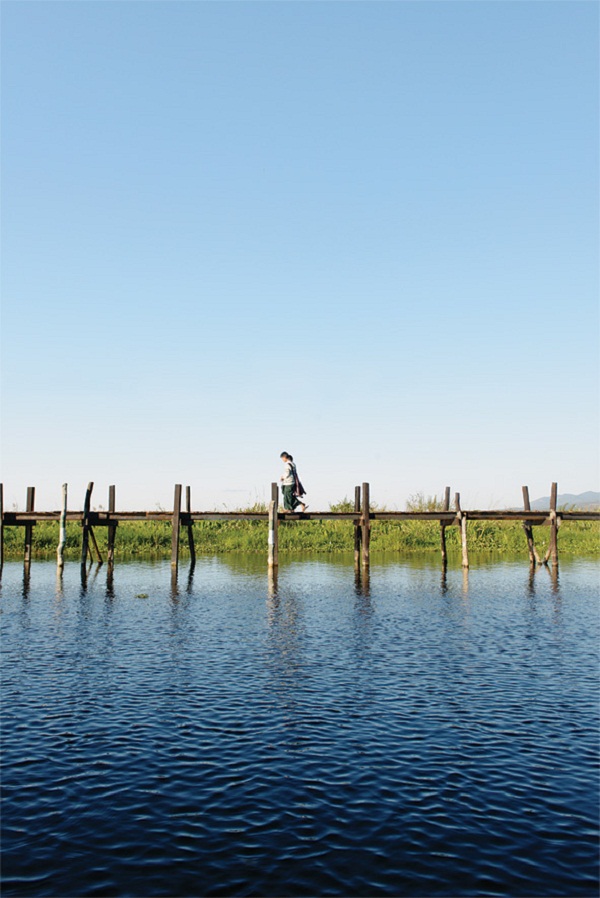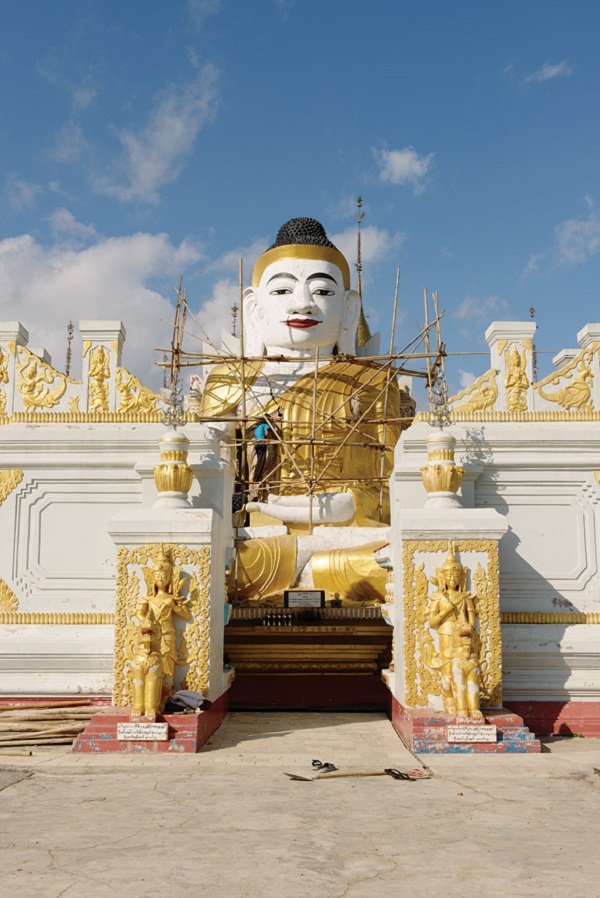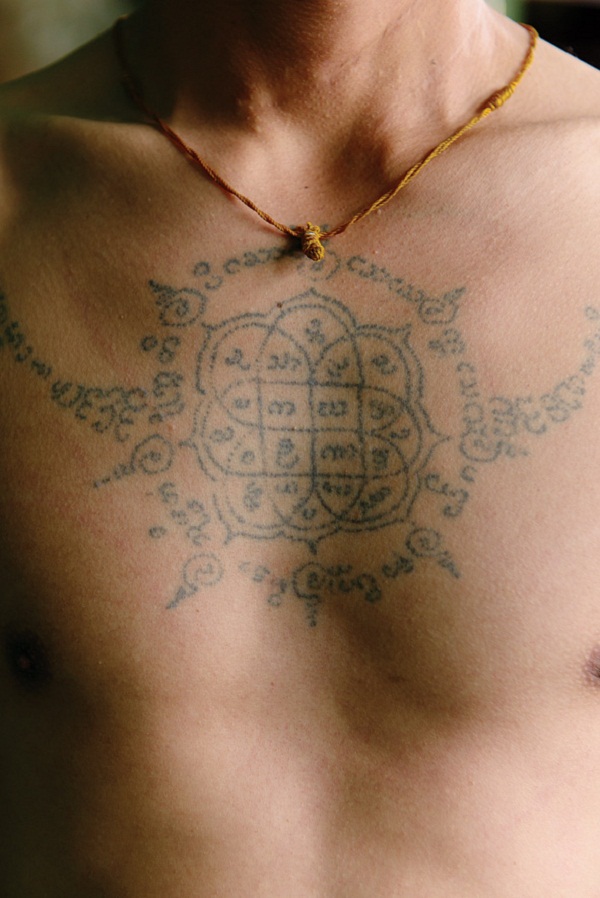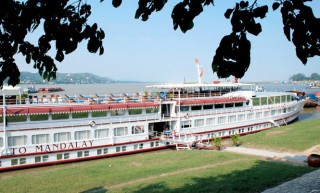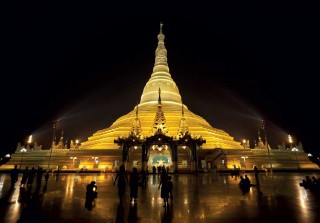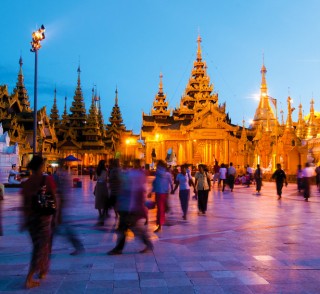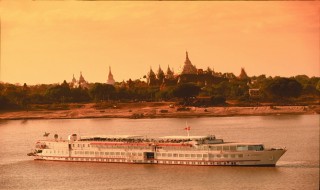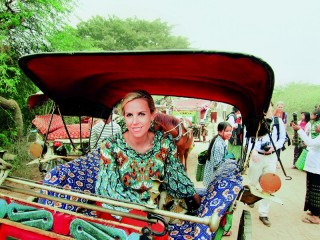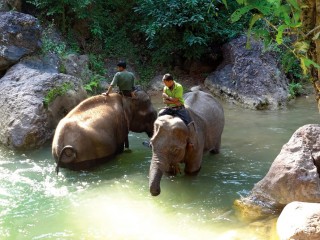Tourism is set to add further to the pressure on the lake’s fragile social and environmental makeup. According to the Inlay Lake Conservation Project report, tens of thousands of extra visitors are expected to make their way here each year, and while they will bring additional income, their impact on the ecosystem could offset any benefits for local communities.
Myanmar’s tourism industry grew rapidly in the mid 1990s. Inle Lake had always been a destination, even during the socialist era when international visitors were limited to seven-day visits. But in the wake of 1996’s Visit Myanmar Year, dozens of hotels began appearing on and around the lake, catering to an ever-expanding number of travelers. In 2013, more than 97,000 foreigners descended on the area, and as many as 120,000 are expected this year.
It’s easy to appreciate what draws them here. The lake is flanked on both sides by the blue-tinged Shan Hills, creating a panorama that is hard to beat. Just as alluring is the local culture, with its colorful daily markets, leg-powered boats, and stilted waterside villages. Farther afield, religious sites like Indein, famed for its hundreds of cracked, ancient stupas, can be reached by charting a course along the lake’s narrow canals. There’s even a winery, Red Mountain Estate, just a short bicycle ride from Nyaungshwe.
As elsewhere in booming Myanmar, hotels are in short supply; during peak season at Inle Lake, it’s not uncommon for tourists to stay in monasteries for lack of alternative accommodations. The long-delayed introduction of Myanmar’s Environmental Conservation Law has limited recent hotel developments to low-density projects on the lakeshore; my bungalow at Villa Inle, which opened in 2011, is one of just 16 teak villas tucked amid eight hectares of thick greenery and herb gardens. Newer projects are being corralled even farther away, into a 250-hectare hotel zone near the village of Ingyingone, 24 kilometers east of the lake. The construction site is visible from miles away; the orange-yellow of the recently cleared land is a scar on the otherwise foliage-shrouded hills. Although the central government cut it back from the proposed 800 hectares, the project has still been controversial; some of the 84 farmers displaced by the zone initially rejected the government’s compensation offer, and two are still holding out.
Nevertheless, it is here that the government hopes to lure the Intha, who presently rely on agriculture and fishing, with the promise of jobs in hotels and other tourism businesses. Yet when I asked Ma Hsu Mon, the tomato farmer, if she’d consider switching jobs, she was doubtful. “If the chance came to work in tourism and I could get more income, I suppose I would,” she said, looking out at her rows of tomatoes. “But it will never happen. I never finished high school, and the hotels only hire graduates.”
Indeed, the majority of Inle Lake’s hotel staff are from Yangon or other parts of the country, which has created an undercurrent of resentment among the locals. The Intha also fume at the domination of the tourism industry by outsiders: businesspeople from the Shan State capital Taunggyi, Yangon, Mandalay, or abroad. As in the hotel zone, a building boom is taking place in Nyaungshwe, where more than a dozen small hostelries are going up. But just two of the 80 or so completed or under-construction hotels in the Inle area are owned by Intha, according to tomato trader U Tin Soe. Early last year, he and other Intha businesspeople tried to set up a public company that would have sold shares and invested the proceeds in tourism businesses. He blames a lack of support from the government and disunity within the Intha community for the project’s failure.
“Tourism is booming, but it’s monopolized by big businesspeople. Locals want to get involved but lack the capital, and because of this they do not think tourism is good. None of the profit goes to them,” he says, adding that education is key to improving the Intha’s prospects. “The hotels mostly hire people from other areas and do not bother to train locals. unless we train them, this is never going to change.”
Yet a few green shoots are appearing. U Ohn Maung, owner of the Inle Princess Resort and one of the lake’s two Intha hoteliers, has established a hospitality training school at the Inthar Heritage House, a cultural center near Phaung Daw Oo Pagoda. It aims to teach between 40 and 50 students each year. And a Tourism Master Plan released in September 2013 and drafted with the Asian Development Bank calls for a US$8 million investment in another vocational institute, with an additional US$35 million to be spent on wastewater treatment and roads.
When (and if) that money materializes, no one can say, but at least some local enterprises are already benefiting from Inle’s brisk tourist trade. Near Samka, on the southern end of the lake, I meet a young man called Sai Sai, who runs a rice-wine distillery producing what he labels “Jungle Rum”; its logo features a monkey swinging through the trees. While the business has been in the family for four generations, sales began picking up after the area opened to tourists in 2004. Today he sells as much as 100 liters a day to visitors, who down the clear, harsh liquor over lunch at communal tables before buying bottles to take home as souvenirs. “A few years ago I came back from a hotel to work here with my family,” he says. He has since called more of his relatives home to join him, reversing the all-too-common outflow of young people from villages. “We like it here,” he says, wrapping an arm around his wife. “Business is getting better all the time.”

